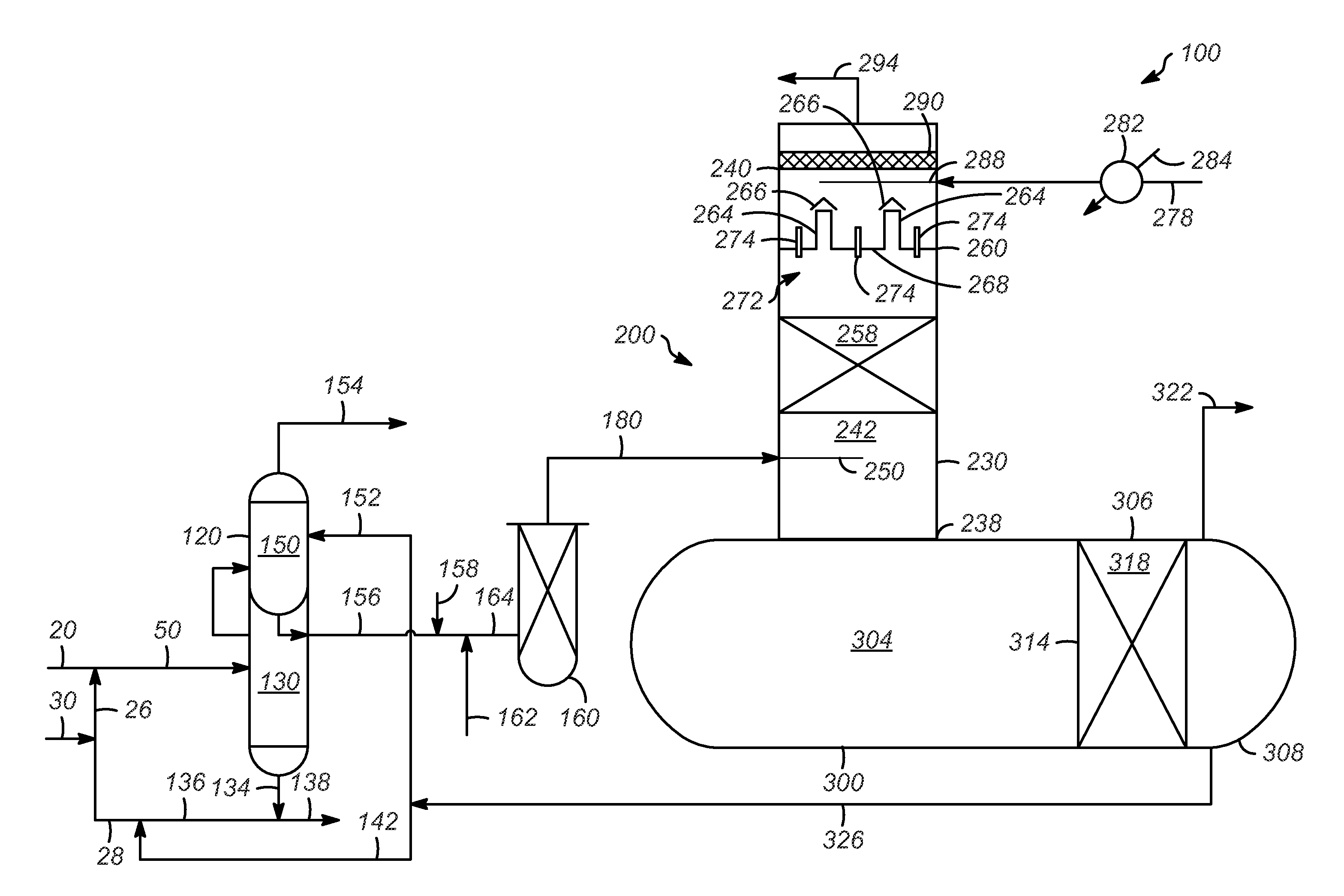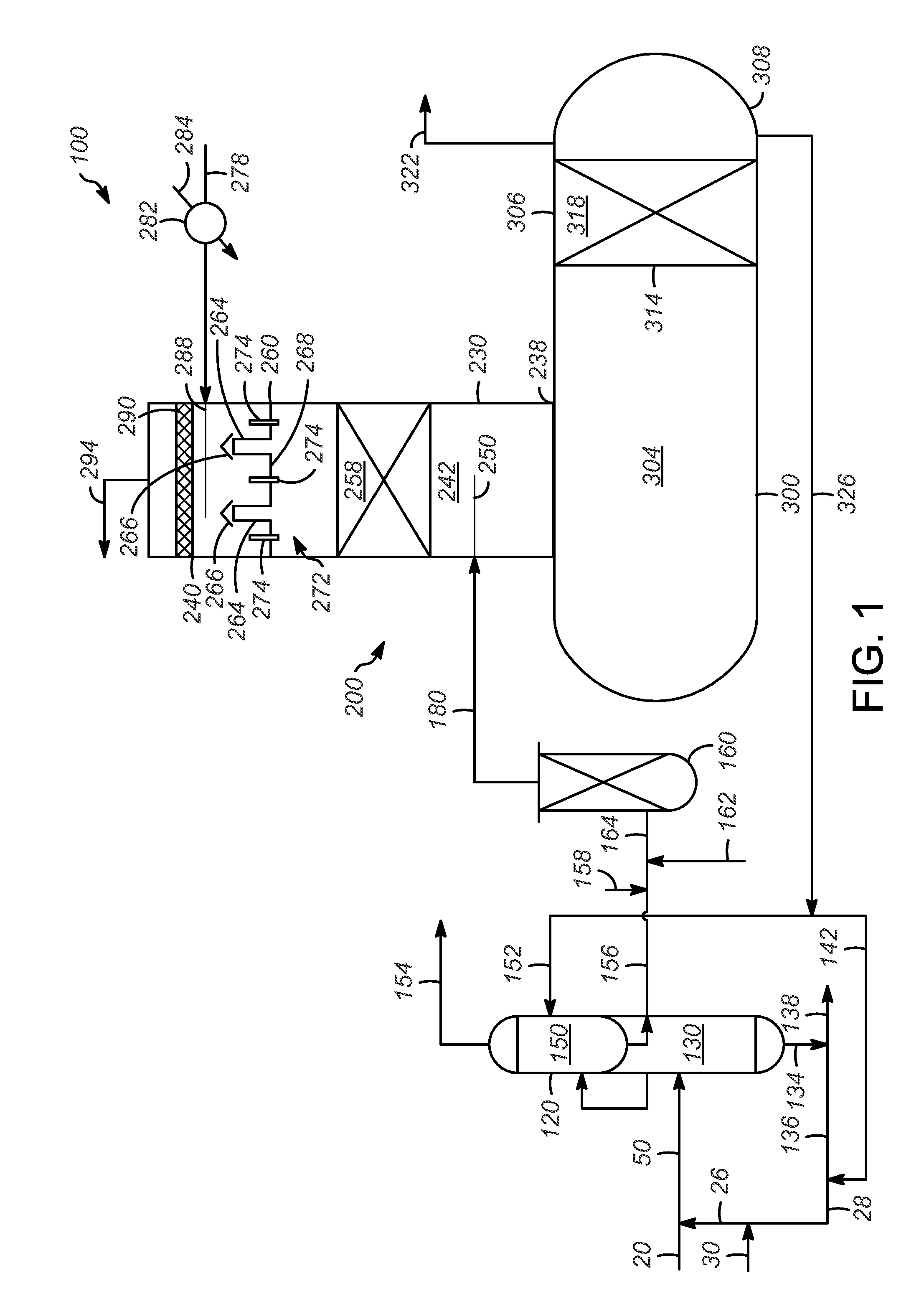Process for reducing corrosion
a technology of process and corrosion, applied in the field of process for reducing corrosion, can solve the problems of creating regulatory concerns and corrosion of equipment surrounding the vent gas stream, and achieve the effect of reducing corrosion and minimizing corrosion
- Summary
- Abstract
- Description
- Claims
- Application Information
AI Technical Summary
Benefits of technology
Problems solved by technology
Method used
Image
Examples
Embodiment Construction
[0020]Referring to FIG. 1, an exemplary apparatus 100 for removing one or more sulfur-containing compounds, such as mercaptans, from a hydrocarbon stream 20 is depicted in FIG. 1. Typically, the apparatus 100 can include an extractor vessel 120, an oxidation vessel 160, and a separation vessel 200. The vessels, lines and other equipment of the apparatus 100 can be made from any suitable material, such as carbon steel, stainless steel, or titanium. As depicted, process flow lines in the figures can be referred to, interchangeably, as lines, pipes, branches, distributors, streams, effluents, feeds, products, catalysts, withdrawals, recycles, and caustics. An exemplary extractor vessel, oxidation vessel, and separation vessel are disclosed in US 2010 / 0122936 A1.
[0021]The hydrocarbon stream 20 is typically in a liquid phase and can include a fuel gas stream, a liquefied petroleum gas, or a naphtha hydrocarbon. Typically, the hydrocarbon stream 20 contains sulfur compounds in the form of...
PUM
| Property | Measurement | Unit |
|---|---|---|
| temperature | aaaaa | aaaaa |
| temperature | aaaaa | aaaaa |
| pressure | aaaaa | aaaaa |
Abstract
Description
Claims
Application Information
 Login to View More
Login to View More - R&D
- Intellectual Property
- Life Sciences
- Materials
- Tech Scout
- Unparalleled Data Quality
- Higher Quality Content
- 60% Fewer Hallucinations
Browse by: Latest US Patents, China's latest patents, Technical Efficacy Thesaurus, Application Domain, Technology Topic, Popular Technical Reports.
© 2025 PatSnap. All rights reserved.Legal|Privacy policy|Modern Slavery Act Transparency Statement|Sitemap|About US| Contact US: help@patsnap.com


